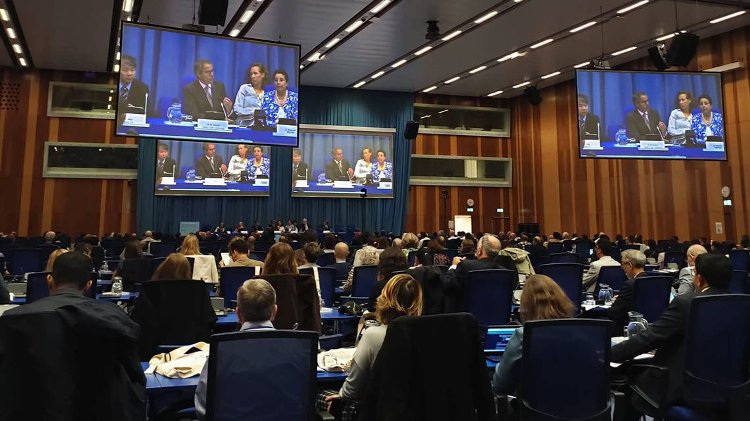IAEA’s Conference on Application of Radiation Science and Technology begins
These and many other topics will be discussed at the IAEA’s Second International Conference on the Application of Radiation Science and Technology (ICARST), which begins today.

Determining the presence of microplastic in environmental samples, removing pesticides from agricultural soil and studying how to grow tomatoes in outer space are all possible thanks to radiation techniques. These and many other topics will be discussed at the IAEA’s Second International Conference on the Application of Radiation Science and Technology (ICARST), which begins today.
The conference, held at the IAEA headquarters in Vienna, Austria, from 22 to 26 August, brings together some 800 radiation scientists, technologists, entrepreneurs and policymakers from 90 countries, to discuss the many uses of radiation in fields as diverse as industry, engineering, medicine and agriculture.
“We are trying to make science an instrument for real change,” IAEA Director General Rafael Mariano Grossi said at the opening of the conference. “We foster and celebrate pure science, but we also are very focused on applications,” he noted, adding that many countries are increasingly adopting nuclear and radiation techniques for a variety of purposes, such as recycling plastics, treating cancer or addressing zoonotic disease outbreaks.
The first ICARST, held in 2017, discussed key scientific and technological advancements, forged multidisciplinary collaboration and stimulated new initiatives to foster the application of radiation techniques across sectors. Throughout the week of this year’s ICARST, leading scientists, engineers and industry professionals will share their ideas in a series of plenary sessions, presentations and panel discussions on how radiation technologies can contribute to addressing various pressing global challenges.Science enabling collaborationRadiation science and technology are used in everyday life. Radiation applications can help protect the environment by detecting and even eliminating pollutants from water, air and soil. They also help increase food security when applied to develop new crop varieties and used to destroy dangerous pathogens in food. Furthermore, radiation can sterilize medical equipment, enhance the strength of materials, protect cultural heritage objects from insects and mould, and detect and cure diseases such as cancer.
To take full advantage of the many uses of radiation, the IAEA supports countries by providing the requisite knowledge, expertise, technology and training. Through ICARST, the IAEA is fostering partnerships between academia, industry, business and policymakers, to turn ideas into tangible results and contribute to a sustainable future.
In addition to the technical sessions, this year's special panel discussion will focus on gender equality in radiation science and technology. To support students and young professionals, the Young Investigator Award will be given for selected successful scientific works.
“Nuclear science is for everyone, and the IAEA encourages greater participation from young people, women and those from developing countries in the nuclear field,” said Najat Mokhtar, IAEA Deputy Director General and Head of the Department of Nuclear Sciences and Applications. “Through our award, we're recognising the achievements and efforts of young investigators and acknowledging the value they contribute to sustainable development.”
The conference will conclude with a round table discussion that will formulate recommendations to shape the future development of radiation science and technology.










